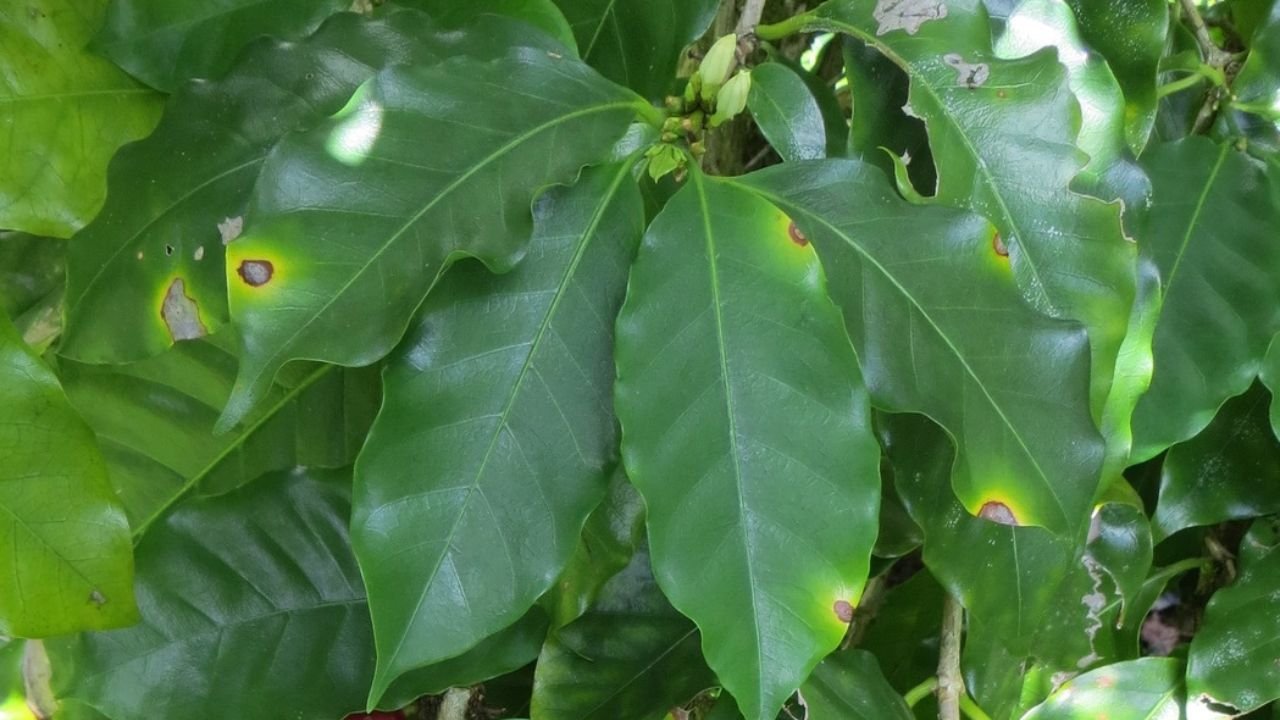5 Types Common Coffee Plant Diseases, Read! Before Too Late!
One of the leading plantation commodities cultivated by farmers is coffee. Coffee plants require special attention in their cultivation practices, including the problem of pest and coffee plant disease attacks. The main problem in smallholder coffee plantations is the low productivity and quality that does not meet the standards caused by pests and diseases.
Pest and disease attacks on coffee plants can cause adverse effects, ranging from economic losses in quality and quantity to causing crop failure. The pest attacks often found on coffee plants are the decay and fall of young fruit and the presence of infectious diseases that cause damage to coffee plants.
Table of Contents
Coffee Plant Diseases
1. Seedling Wilt
Disease This disease occurs in young coffee seedlings in the nursery. Usually occurs after the seedlings have germinated but have not reached the transplant age. The fungus Pythium spp causes this disease.
This fungus is transmitted through the soil and usually occurs when the soil is too wet, and the nursery is not well-lit. Symptoms of the attack are young coffee seedlings die quickly. The stems of the seedlings are soft and rotting.
Control:
- Do not use planting media from the previous nursery because it may contain Phytium spp.
- Avoid overwatering.
- Keep the seedlings close enough (2.5 x 10 cm).
Chemical control can be done by spraying the soil or using fungicides with the active ingredient mankozeb, such as Benlate, Benomyl, Dithane, etc.
2. Cercospora Leaf Brown Spot Disease

Leaf spot disease is caused by a fungus when the plant is under stress. The fungus can attack coffee plants in nurseries and planting fields. When attacking the nursery, this indicates poor nursery management.
Symptoms of this disease are the appearance of brown spots with reddish-brown edges. These spots are visible on both sides of the leaf surface. As the spots increase, the leaves will look like they are charred.
This disease usually appears when the nursery or land conditions are too wet, too shady, or too light, with poor air circulation and a lack of nitrogen and potassium.
Control:
- Avoid excessive watering.
- The shade level is maintained at around 50%.
- The spacing of seeds and plants must be appropriate to facilitate air circulation.
- Acceptable use of fertilizers. The use of chemical fungicides based on copper.
For example, copper cupravit 85WP and copper oxychloride with a concentration of 80 g/20 l of water. Or use copper hydroxide with a concentration of 40 g/20 l of water.
3. Cercospora Fruit Spot Disease

Cercospora fungus attacks coffee leaves but sometimes also affects coffee cherries, known as fruit spot disease. Symptoms of this disease attack include spots on the leaves that are getting wider and wider, with reddish brown spots on the edges. The spots will appear on both sides of the leaf surface. At the same time, the fruit will appear in dark brown spots surrounded by a bright red ring.
The causes of this coffee plant disease are lack of nitrogen and potassium nutrients in the leaves, insufficient sunlight, stress due to lack of water, too much sun, insufficient fertilizer application, and too many weeds in the field.
Control: To prevent the emergence of this disease, make sure the coffee plant gets enough nutrients and sunlight at about 50%—using chemical fungicides based on copper. For example, copper cupravit 85WP and copper oxychloride with a concentration of 80 g/20 l of water. Or use copper hydroxide with a concentration of 40 g/20 l of water.
4. Sooty Mold Fungus

The fungus Capnodium spp causes mould disease. Aphids, shield lice, whiteflies, or other sucking insects can infest the coffee plant and cause this fungus to develop.
Symptoms of attack are leaves covered by black soot and powdery. The fungus grows on honeydew secreted by shield lice and other sucking insects. Ants usually keep shield ticks and spread sooty mould.
Control: this coffee plant disease is carried out by controlling shield lice, aphids, and whitefly using the recommended procedures.
5. Anthracnose disease

Coffee plants contract the disease anthracnose from the fungus Colletotrichum gloeosporioides. This fungus targets fruit, twigs, and flowers. Three different plant diseases, including fruit splitting, leaf necrosis, and twig-deathly, can be brought on by this fungus.
Symptoms of attack on twigs. The leaves on the twigs will turn yellow, and spots will appear. The twigs will curl, lose their leaves, and die at the tips.
Symptoms of anthracnose are somewhat tricky to distinguish from symptoms of Cercospora disease. Symptoms of attack on fruit. On the coffee cherries, dark brown spots appear, which will later turn black and hard.
Symptoms of attack on the leaves. The development of brown, circular, and up to 25 mm in diameter necrotic patches on the leaves. The worst attacks will cause the leaves to look burnt or damaged.
Maintaining the health of coffee plants helps to control this illness. Other forms of control have received little attention. However, the use of several types of fungicides is quite effective in preventing this disease.
Premium Quality Coffee Beans Determine The Plantation’s Performance
At FnB Tech Indonesia, we proudly examine and thoroughly check through the high-quality control process. We plant and take care of each tree so that we can prevent coffee plant diseases from happening. FnB Tech Indonesia provides coffee beans from around Indonesia, Toraja, Gayo, Kintamani, and you name it.
From Arabica, Robusta and green beans have been our top premium beans. Since 1999, in North Sumatra, FnB Tech has successfully walked with the hands of coffee farmers to maintain the excellent quality of coffee beans until you sip every drop of it.











